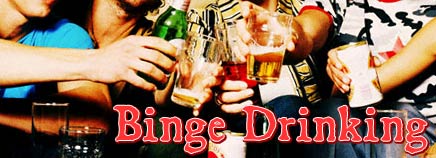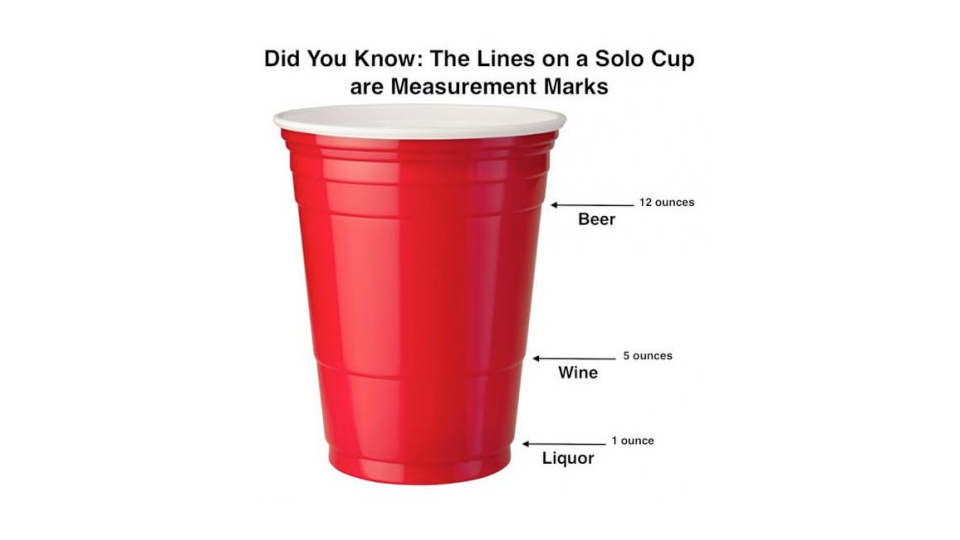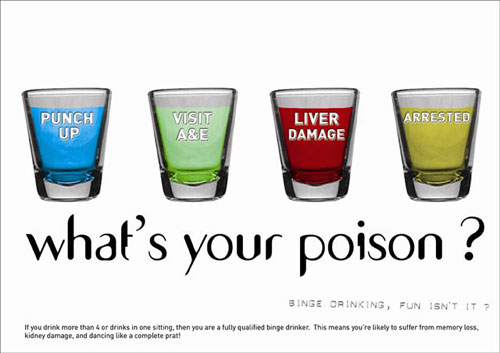 Dec. 31, 2012 Prequel to New Year’s Eve…
Dec. 31, 2012 Prequel to New Year’s Eve…
Long gone are the days when I could host a “New Year’s at Noon Bubble Wrap Stomp” and watch little kids gleefully squirt silly string at each other in rowdy ‘make as much noise as you can” festivity for a honking good time…
Those with older teens like myself are looking for healthier choices for teen New Year plans and maybe even some helpful New Years apps to share with collegiate crews rather than defaulting to ‘amateur night’ of media messaging that portrays binge drinking as one big boozy mishap in a twisted rite of passage as seen on party hearty dramedies, sitcoms, or teen renditions of Fast Times at Ridgemont High meets The Hangover movies. (I wrote about ‘”Packaging Boyhood, New Year’s, and The Hangover film” here)
Media influence depicting adolescent alcohol use has been climbing toward ‘social norming’ levels of reinforcement lately, even though some stats say use is at a ‘historical low’ while others maintain the bigger issue is that adolescent abusers can harm their brains within months. Thankfully, the American Academy of Pediatrics has been keeping a watchful eye on the ‘age compression’ dynamic of how young binge drinking is starting to show up in youth. (my cynical marketing brain clicks to ‘hmn, if behavior IS curbing, the beverage industry will try new ‘product positioning’ the AAP is right to stay on top of this) This new Journal of Pediatrics study tries to connect the dots on media influence:
Scientists surveyed 16,500 youth, ages 10-19 in six European countries and the Journal of Pediatrics reported 27% of the European adolescents surveyed had engaged in binge drinking while the CDC reports about a 22% binge drinking response for USA youth.
“We did not expect this clear finding, but it shows how influential media are in a young person’s life,” says Reiner Hanewinkel, Ph.D, from the Institute for Therapy and Health Research in Kiel, Germany. “Hollywood blockbusters are distributed worldwide, and they have an impact not only on U.S. teens but also abroad.” The CNN article goes on to say:
“There are many other well-known risk factors that can affect a teen’s decision to drink, so Hanewinkel and his fellow researchers took those into consideration.
They looked at a teen’s levels of rebelliousness or sensation-seeking, peer drinking levels, family drinking patterns, affluence and gender. Even with all these variables accounted for, the researchers still found that the amount of alcohol consumed in movies influenced teens to consume larger amounts of alcohol. Researchers in America have also found a link between drinking in movies and adolescent alcohol consumption habits…”
“In both settings [in Europe and the U.S.], youths with high exposure [to drinking in movies] are about twice as likely to try drinking and, among the experimental drinkers, twice as likely to binge drink, regardless of the marked across-country differences in how alcohol is regulated and consumed,” says James Sargent, Professor of Pediatrics at Dartmouth Medical School and co-author of a study on alcohol use in American youth. Sargent is concerned about the lack of attention this health issue gets in the United States because “teens in the U.S. start to drink at age 10 to 11 and some progress very quickly to binge drinking.”
Well isn’t that just ducky.
As I was struggling to contextualize all this, (e.g. the massive sampling yet vast differences between a 10 and a 19 year old, the corollary vs causation blame game debate, genes as a factor, etc.) I found myself short-cutting to the very visceral, wince-worthy reaction of most who follow the parenting basics (don’t get drunk yourself, know where your kids are and with whom, etc.)…
…Sheer, slack-jawed incredulity at the idiocy and complicity of an entertainment industry knowingly escalating the public health problem to begin with, much less dialing down the demographic to increasingly younger kids.
If 10 is the new 15, the last thing we need is innuendos glamorizing a ‘party’ atmosphere to six year olds, ranging from Monster High dolls to the Bratz ‘spring break’ collection marketed complete with high heels, swimsuit, cocktail glass and “lotion” bottle (aka flask). It truly makes me want to shout from the windows:
“Hey, brilliant media/marketing minds could you please stop undermining parents and trashing youth bodies in the name of selling gonzo ‘lifestyle’ products that play into adolescent developmental dares, from energy drinks and alcohol to binge drinking storylines with a tacked on ‘consequence’ in CYA mode and diva dolls with Bratitude that party hearty?
We know you like to get ‘buzz’ for your ratings, but getting kids buzzed at ever earlier ages in age compression mode normalizes behavior and is fouling up the works accelerating a public health problem that we’ll be mopping up long after your profiteering from kids’ vulnerability. Knock it off! NOW! Signed…parents everywhere.”
 If you need further convincing that this trend needs permanently put on ice, there are now even tech tools to “calculate the cost” of alcohol and families, but it doesn’t take a rocket scientist to figure out that seeding liver disease and frying young brain cells is an equal opportunity destroyer right up there with Joe Camel and Pink Dreams cigarettes going after teen girls in ‘aspirational marketing.’
If you need further convincing that this trend needs permanently put on ice, there are now even tech tools to “calculate the cost” of alcohol and families, but it doesn’t take a rocket scientist to figure out that seeding liver disease and frying young brain cells is an equal opportunity destroyer right up there with Joe Camel and Pink Dreams cigarettes going after teen girls in ‘aspirational marketing.’
So rather than studying research methodology, percentages, and media damage on alcohol influence AFTER the fact, how about leveraging a bit of public health knowledge, common sense, and industry accountability BEFOREhand, hmn?
The lack of industry self-rein in the ethics and accountability department are staggering when parents see their children used as glorified guinea pigs in an escalation of party personas to vault teen angst and drama/dicey decision making into the forefront in the name of ratings and ticket sales.
Parents like me prefer a ‘do no harm’ industry default versus a ‘let’s see what happens’ inquiry substantiating medical research and pointing to media influence and impact with umpteen corollary vs causation stats.
As I cited the Kaiser Family Foundation research in Kids Prime Time TV Health Cues Ingested for Better or for Worse and also in this piece on Glee and Teen Sex Facts and Falsehoods,we have a missed OPPORTUNITY here to use the power of media for positive change…we’re just not being smart public health advocates.
Take a quick peek at this list of teen dramas…any remote possibility they might depict characters ringing in the New Year in healthier environs or tossing in some fresh ideas and alternative plotlines? Didn’t think so.
In real life, parents are seeking ‘milestone and destination events’ for ‘almost 18s’ that don’t involve liability and collateral damage…from glow in the dark rock-n-bowl lanes to organized dance party extravaganzas with big screen ball drops and security built in to the ticket price… (this is becoming a trend with grad nights and amusement park venues too)
Why not host your own?
For many, hosting a party now comes with ‘mobile flash mob potential’ that most parents AND kids just don’t want to hassle with, especially since media has cued kids that teen parties are all about ‘red cups,’ keggers, and high hottie factor in “Greek” style collegiate emulation.
Granted, some will roll their eyes, perceiving binge drinking as a problem that’s ‘always been there’ but I can’t reiterate enough the HUGE difference now is it’s served up using 24/7 media as joy juice pouring onto increasingly younger demographics, impacting kids with “aspirational marketing” through depiction in shows, through mobile social content, even cartoon innuendos and advertising, as I wrote about in this alcopops targeting of urban tweens and teens marketed to kids using Snoop Dogg in the role of slimy sellout star…
What CAN we do?
 For starters, in media, I say we can start by holding industry accountable for pumping out copious quantities of risky behavioral cues, glamorized at high volume in surround sound (Party hearty binge-drinking bit doesn’t need media enforcement for adolescent experimentation, how about some productive counter-marketing to purposely de-glam the alcohol industry propaganda? Or even ‘charge for harm’?)
For starters, in media, I say we can start by holding industry accountable for pumping out copious quantities of risky behavioral cues, glamorized at high volume in surround sound (Party hearty binge-drinking bit doesn’t need media enforcement for adolescent experimentation, how about some productive counter-marketing to purposely de-glam the alcohol industry propaganda? Or even ‘charge for harm’?)
And…better yet, why not use media to embed POSITIVE solutions and more imaginative alternatives to motivate healthier behaviors and mitigate drinking damage with intervention and prevention. For example:
Why not show the use of prevention apps like Circle of 6 in ‘get me outta here’ mode whether for teen drinking/dating violence or a party that’s gone bad? We could also use mobile social incentives to curb negative peer choices (from texting and driving to anonymous peer intervention and outreach)…and then embed the use of the apps in popular shows to create awareness?
The Grey’s Anatomy/HIV education plotline I wrote about was proof positive we can layer in health education seamlessly with multi-dimensional characters and consequences rather than flat ‘preach-n-teach’ depictions in PSA style…
Where’s the innovation for education to SOLVE problems rather than CREATE them with toxic cues to kids?
It’s time to get creative and pour out the old boozy, formulaic thinking…besides, even moderate impairment can alter the brain cells, maybe that’s why Hollywood is making such detrimental, short-sighted decisions. (This Nat’l Institute of Drug Abuse graphic at left shows MRI scans of healthy children and teens over time, more here) And just thinking aloud…
 Media producers could also easily plop some of the ensemble casts into alternative New Year celebrations to create coolness cache and suggest fresh ideas by having lead characters celebrate in non-boozy ways…
Media producers could also easily plop some of the ensemble casts into alternative New Year celebrations to create coolness cache and suggest fresh ideas by having lead characters celebrate in non-boozy ways…
…All night movie marathons, sports challenges (e.g. biking over a bridge, ‘Extreme’ snow sports, skating for a cause) or at a ‘getaway’ into nature with peers… (c’mon, if you can’t come up with some interesting storylines and dramatic tension using snow, cabins, bonfires, adventures, critters and sleeping bags, you need a new creative team)
In the adolescent health advocate sphere, Time Healthland report delves deeper into questions PEDIATRICIANS might tactfully ask to tease out signs of ongoing alcohol abuse and encourages peers and parents to not just ignore boastful social media status lines that may be an outreach for help.
From talk shows and tweet chats to Facebook and blogs, parents are chatting about ‘what we can do’ rather than just ‘give in’ with a shoulder shrug allowing media and marketing to take over as ‘super peer’ with ‘dumb and dumber’ messaging and a high ticket societal price that costs us all.
Parents are also “sharing” personal stories of teens and trauma, whether it’s DUI experiences or ancillary mayhem, hoping to crowdsource some solutions using social media, and learn from each other to combat the media messages without ‘over-reacting.’
They’re taking a ‘help us help each other’ collaborative, approach asking both “What did you do?” and a preventive/proactive “What WOULD you do?”
Now it’s time we ask the entertainment industry the same question.
How can we quickly switch the track on this runaway train…before it derails any more young kids?
Visual credits: Kids Health.org (on binge drinking) and shot glasses graphic via this insightful first person prose about drinking on college campuses and ‘what’s changed’ over the years.










I wrote a four week series on teen alcohol abuse for youth leaders and youth advocates. Full talk notes and small group discussions. If anyone is interested in facilitating conversation with their students.
http://youthleaderstash.com/2012/01/01/smashed-series-2/